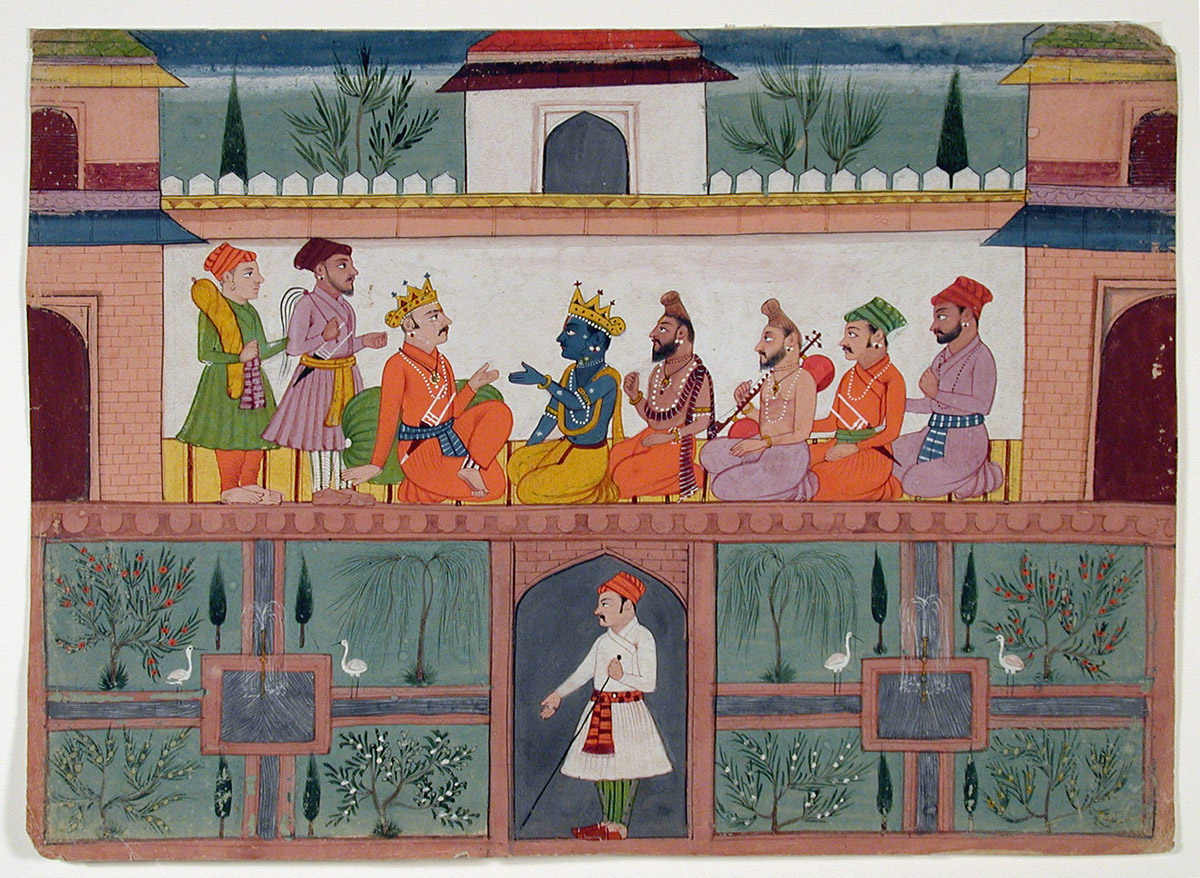
Malwa is a Central Indian region from yore with a melting pot of history, culture and artforms. Malwa has its own unique style of miniature painting, though listed under the broader Rajasthani School. The area resonates with its historical past. It is also synonymous with the former state of Madhya Bharat or Central India which was later merged with Madhya Pradesh. The districts of present day western Madhya Pradesh and some parts of south-eastern Rajasthan now represent the historical Malwa region. The culture of Malwa has been influenced by Rajasthani culture, and Marathi influence is also visible, because of rule by the Marathas.
Suggested Read – Miniature Paintings of India: Evolution of Different Art Schools and Styles

During and after the golden Gupta period of Indian history, Malwa was the centre of Sanskrit literature. The region’s most famous playwright, Kalidasa, is a great Indian writer. The polymath king Raja Bhoja is from the region.The love story of Baz Bahadur and Roopmati of Mandu echoes in the region even today. Lavani is a folk music form, while Swang is a dance form. There also exists a traditional floor and wall painting form called Mandana. Malwa has its own fairs and festivals and a rich multi-cultural cuisine. Malwa has places like Ujjain, Indore, Maheshwar too, places full of its individual rich history, the region having been ruled by the Avanti kingdom, Mauryans, Malavas, Guptas, Paramaras, Delhi Sultanate, Malwa Sultanate, the Mughals, Marathas and finally the British, before becoming part of the Indian Union.
School of Malwa Paintings

The school developed from the 17th century when the Mughal emperors granted fiefs to the Rajputs in the region. The content of the paintings are varied and interesting, with attention to detail and the colours vibrant. There are Ramayana illustrations, Ragamalas, Nayaka-Nayika bheda illustrating the ‘Rasikapriya’ of Keshavdas, the ’Amaru Sataka’ illustrations and the Radha-Krishna theme. Malwa paintings include scenes from the Bhagavata Purana ehich relates to Lord Krishna’s life. The legendary love story of Baz Bahadur and Roopmati at Mandu has caught the imagination of Malwa artists. Since architecture is such a pivotal aspect in Malwa miniatures, it is important to mention here that Malwa’s architectural style developed mostly in the 15th and 16th century. Some features included combination of arch with pillar, lintel and beam, use of coloured marble, precious stones, glazed tiles and grand, stately steps.
Suggested Read – Folk Art Forms of India – Defining Our Cultural Diversity

Malwa’s miniature paintings are well appreciated for their vibrancy and intricate brushwork. As per the Encyclopaedia Britannica ‘’…..in the 17th century, an offshoot of the Rajasthani school of miniature painting, known as Malwa painting, was centred largely in Malwa and Bundelkhand. The school preserved the style of the earliest examples, such as the Rasikapriya series dated 1636 (after a poem analysing the love sentiment) and the Amaru Sataka (a 17th-century Sanskrit poem). The paintings from this school are flat compositions on black and chocolate-brown backgrounds, with figures shown against a solid colour patch, and architecture painted in vibrant colours’’. The illustrations show that the main content of the painting is happening within the backdrop of beautiful and ornate architecture.
Magical quality of Malwa Paintings

One has to analyse the qualities of the paintings a little deeper to understand a Malwa miniature painting. The detailing and architectural depictions in Malwa paintings are very eye-catching. Though other Rajasthani Schools too have admirable compositions with good details, Malwa seems to just stand out in terms of its architectural elements. A blend of Indo-Islamic architectural styles, it adds that special ambience typical to a Malwa painting. This could be because of its history. Perhaps the ruler commissioning the paintings was fond of this element in the artworks. Beautiful pavilions, terraces, the iconic chattris, wall niches with vessels, decanters and flower vases, vibrantly coloured walls, the paintings have it all. Parchin-kari or ‘Pietra dura’ designs on the lower walls of the main structures depict floral patterns. Terraces are very ornate with decorated parapets. Doorways have scroll designs on them adding to the overall format. One can see that a lot of the inspiration would have been drawn from the palaces and forts in the region. Animal and bird figures like peacocks are depicted on roofs which add a quality of quiet, majestic splendour and reflect an overall harmony with nature.
Suggested Read – 15 Types of Indian Paintings That Flourished Through the Ages

Los Angeles County Museum of Art, Los Angeles, U S A.
References –
- Chaitanya, Krishna (1982) A history of Indian painting – Rajasthani traditions. New Delhi: Abhinav Publications
- https://www.britannica.com/art/Malwa-painting (accessed 15.2.2022)





